StemUp: OCR A A level Physics 6.2: Electric fields
1/35
There's no tags or description
Looks like no tags are added yet.
Name | Mastery | Learn | Test | Matching | Spaced |
|---|
No study sessions yet.
36 Terms
What is an electric field? (1)
This is a region of space where charged particles are subject to an electrostatic force.
What causes an electric field? (1)
Charged particles create their own electric field around them which affects other charges.
How can a uniformly charged sphere be modelled? (1)
These spheres (e.g protons and electrons) can be modelled as a point charges where the electric field is generated from.
What type of electric field do point charges have? (1)
They have a radial electric field with lines pointing like spokes on a wheel:
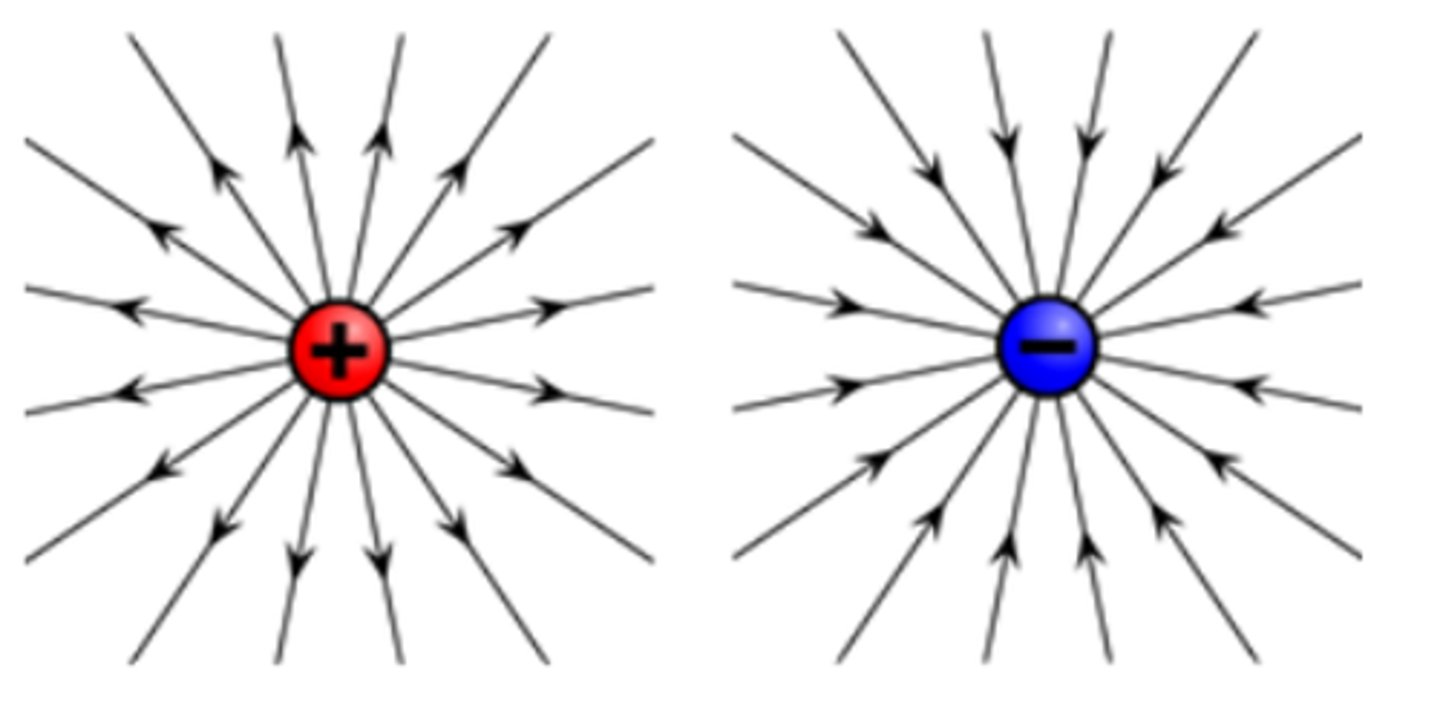
Where do electric field lines point? (2)
- The direction of the arrows represent the direction of electrostatic force on a positive charge at that point.
- Electric field lines point outwards from a positive charge and inwards from a negative charge.
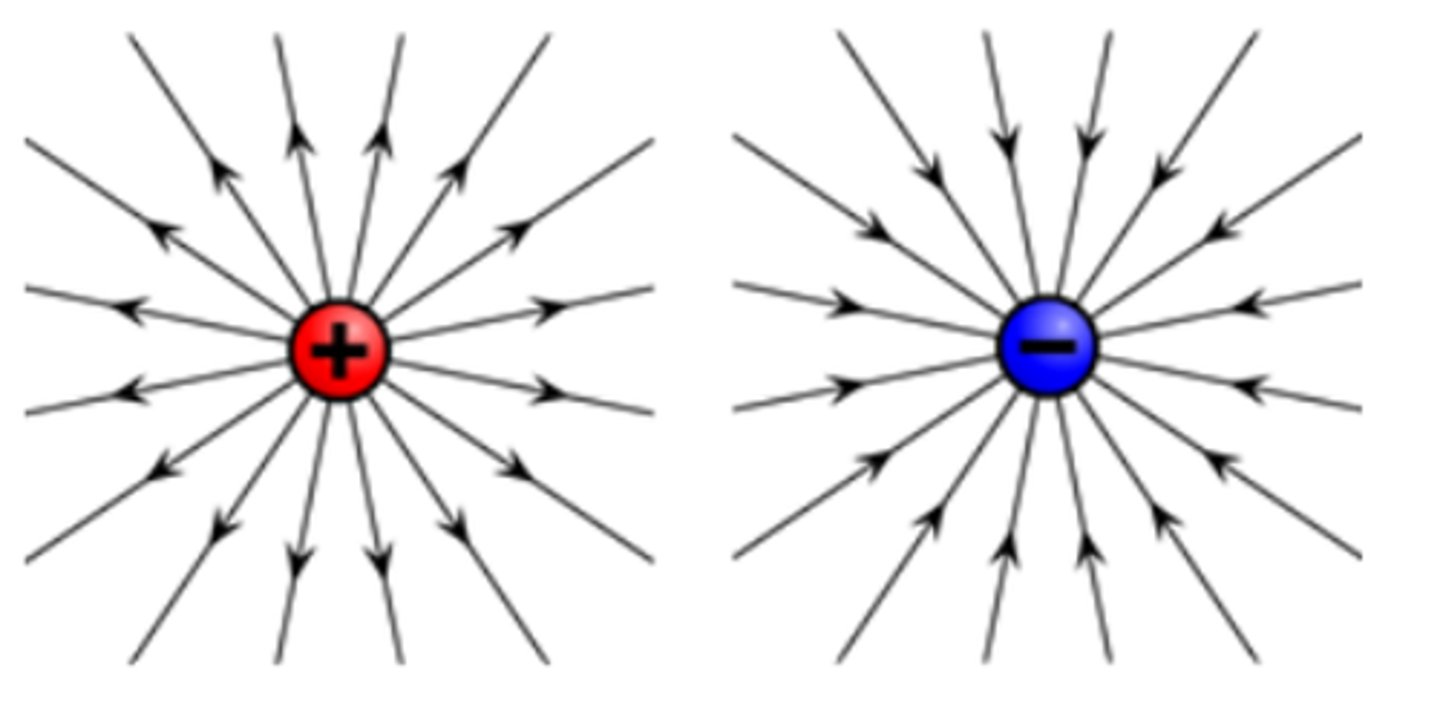
What direction do electric field lines point from a positive charge? (1)
They point outwards as a positive charge will repel from another positive charge:
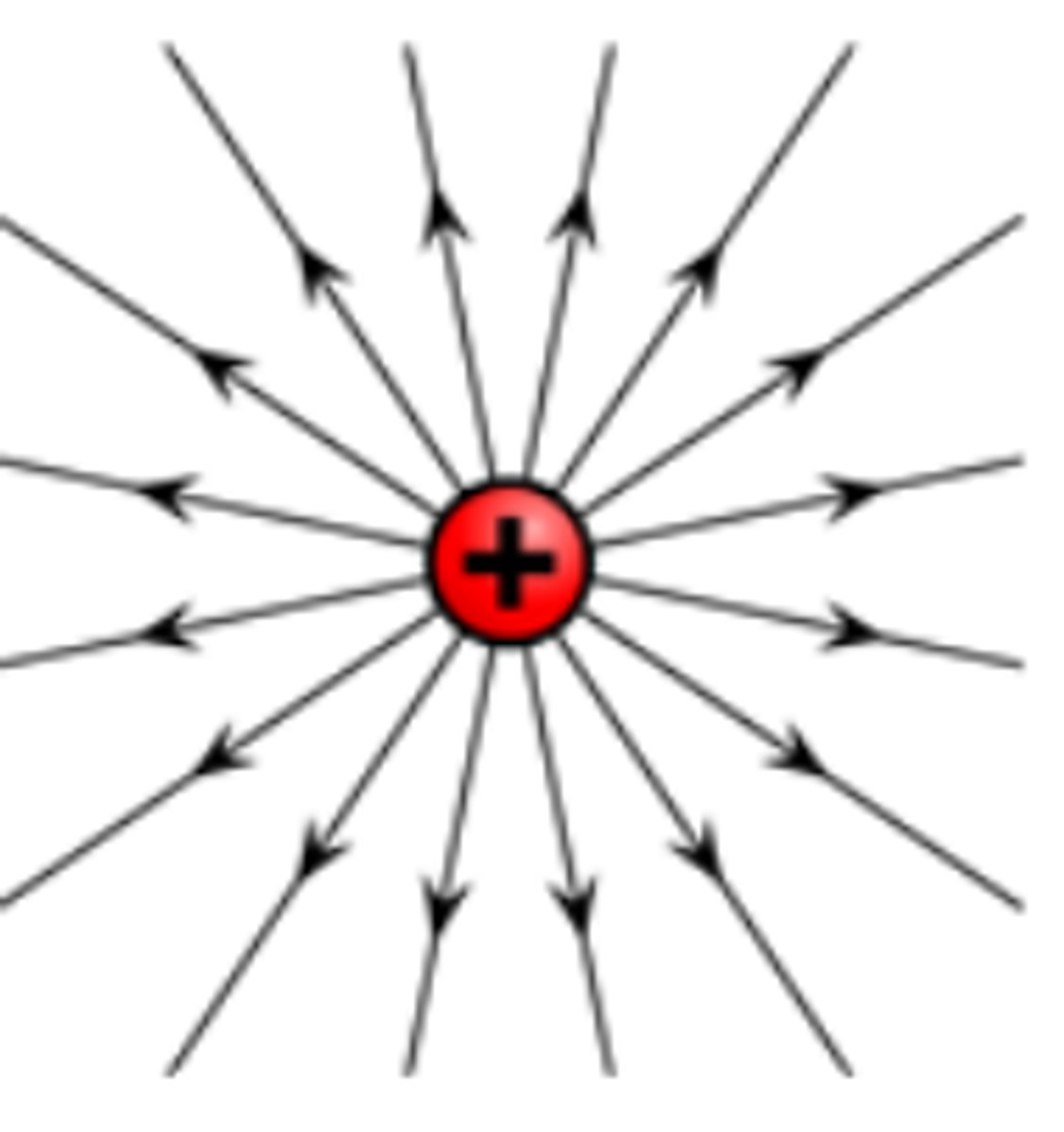
What direction do electric field lines point from a negative charge? (1)
They point inwards as a negative charge will be attracted to a positive charge:
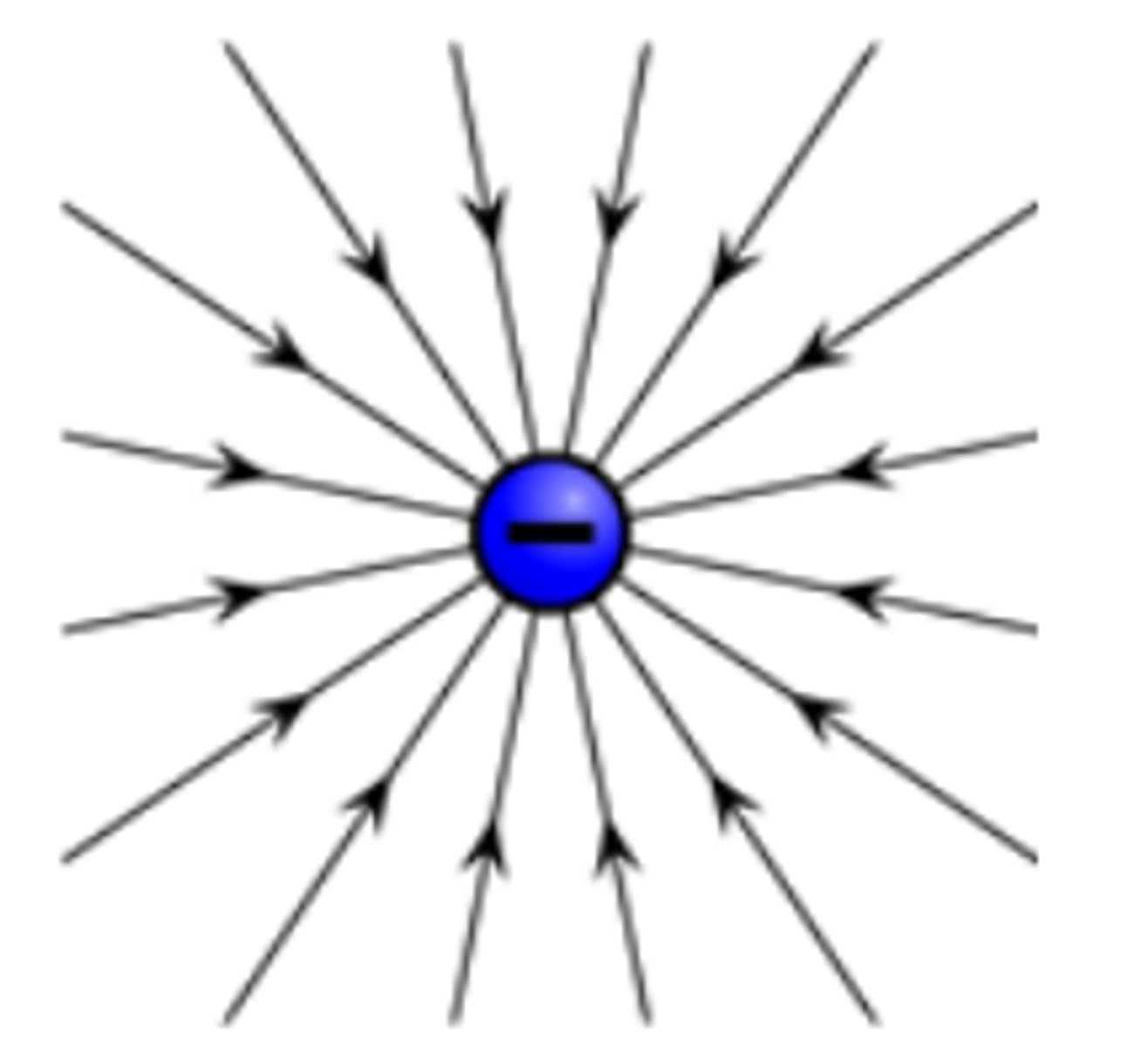
How are electric field lines draw? (3)
- The field lines point from positive to negative.
- The field lines are equally spaced as they leave a surface.
- The field lines are perpendicular to the surface.
What is meant by the electric field strength? (1)
This is defined as the force applied per unit charge on a charged object.
What is the equation for the electric field strength? (2)
- This is given by E = F / Q
- Where E is the electric field strength (NC^-1), F is the force applied on the charged object (N) and Q is the charge of the object (C).
What units is electric field strength measured in? (1)
It is either measured in NC^-1 or Vm^-1
How do electric field lines show electric field strength? (1)
If the electric field lines are closer together, it means the electric field strength is larger.
What does Coulomb's law state? (1)
This states that any two point charges exert an electrostatic force between them that is proportional to the product of their charges and inversely proportional to the square of the distance between them.
What is the formula for Coulomb's law? (2)
- This is given by: F = Qq /4π ε_0 r^2
- Where F is the force exerted on the charges (N), Q is the larger charge of the objects (C), q is the smaller charge of the objects (C), ε_0 is the permittivity of free space (8.85 x 10^-12Fm^-1) and r is the seperation between the centres of the two objects (m).
How is the electric field strength found using Coulomb's law? (3)
- The electric field strength is given by E = F / q so we can substitute Coulomb's law F = Qq /4π ε_0 r^2
into this equation.
- This gives: E = Q /4π ε_0 r^2
- Where E is the electric field strength (NC^-1), Q is the larger charge of the objects (C), ε_0 is the permittivity of free space (8.85 x 10^-12Fm^-1) and r is the seperation between the centres of the two objects (m).
What are the similarities between electric and gravitational fields? (3)
- The force in the field is directly proportional to the product of the two masses or charges.
- The force is inversely proportional to the distance between the centres of the objects squared.
- A point charge or mass will provide a radial field.
What are the differences between electric and gravitational fields? (2)
- A gravitational field always provides an attractive force whilst an electric field can provide an attractive or repulsive force.
- The gravitational field is created by mass whilst an electric field is created by charge.
What is a uniform field? (1)
This is a field which does not have dependence on position, it is constant in space.
How can a uniform electric field be produced? (1)
If there are two parallel oppositely charged plates, a uniform electric field will be produced between them.
What is the formula for a uniform electric field between two plates? (2)
- This is given by E = V / d
- Where E is the electric field strength (NC^-1), V is the potential difference (V) and d is the distance between the plates (m).
How is the formula for a uniform electric field between two plates derived? (3)
- The work done on an object is given by W = Fd and the potential difference as V = W / Q
- The electric field strength is E = F / Q and F can be written as F = W / d = QV / d
- So the electric field strength is E = V / d in a uniform field.
How is the capacitance defined in terms of parallel plate separation and plate surface area? (2)
- This is given by C = ε_0 A /d, more generally C = εA /d where ε = ε_r ε_0
- Where C is the capacitance (F), ε 0 is the permittivity of free space (8.85 x 10^-12Fm^-1), A is the surface area of the plates (m^2) and d is the distance between the plates (m).
What is meant by the permittivity of a non-vacuum material? (1)
- This is the permittivity of a medium which is not a vacuum.
- It is given by ε_r = ε_r ε_0 where ε_r is the relative permittivity of the medium and ε_0 which is the permittivity of a vacuum.
How do charged particles move a uniform electric field? (1)
Charged particles can be modelled as moving with projectile motion in these fields.
How can the mass of charged particles in a uniform electric field be found? (2)
- If the object is stationary in the electric field, the weight downwards is equated with the force acting upwards.
This is given by mg = VQ/d and the mass can be found if the other values are known
What is meant by electric potential? (2)
The electric potential at a point is defined as the work done per unit positive charge to bring a positive charge from infinity to that point.
What is the unit for electric potential? (1)
This is given as the volt (V) or JC^-1
What is the value of electric potential at infinity? (1)
The electric potential at infinity is equal to zero.
What is the equation for electric potential from a point charge? (2)
- This is given by V = Q/4π rε_0
- Where V is the electric potential (V), Q is the charge of the point charge (C), ε_0 is the permittivity of free space (8.85 x 10^-12Fm^-1) and r is the distance from the point charge (m).
How does the electric potential change with distance? (1)
As the distance increases, the electric potential decreases.
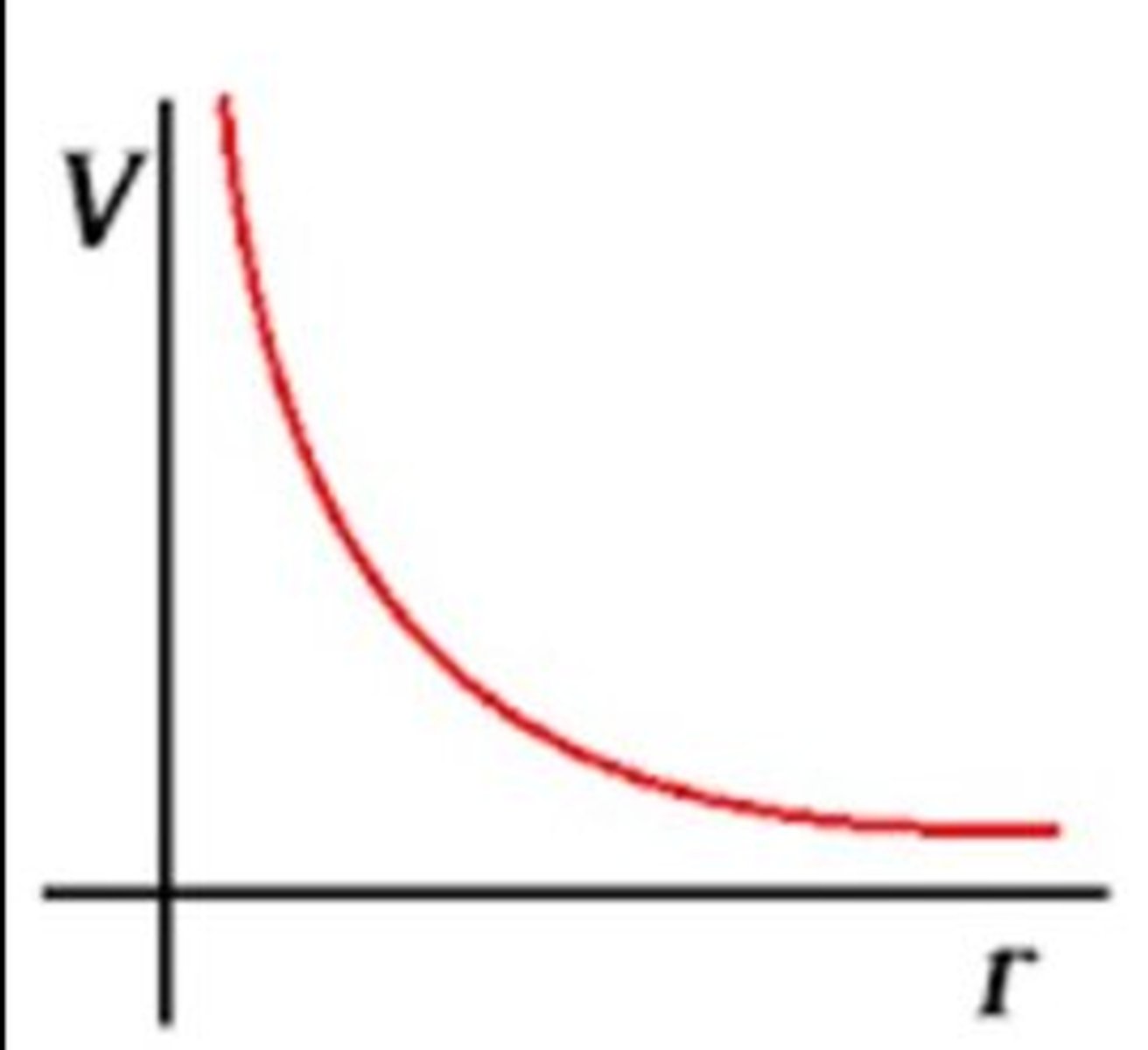
What is the equation for the capacitance of an isolated sphere? (2)
- This is given by C = 4πε_0R
- Where C is the capacitance (F), ε_0 is the permittivity of free space (8.85 x 10^-12Fm^-1) and R is the radius of the sphere (m).
How is the equation for the capacitance of an isolated sphere derived? (2)
- As the capacitance is given by C = Q/V we can insert the electric potential as V which is V = Q/4πrε_0
- This gives the capacitance for an isolated sphere to be: C = 4πε_0 R
What does a force-distance graph for a point or spherical charge look like? (1)
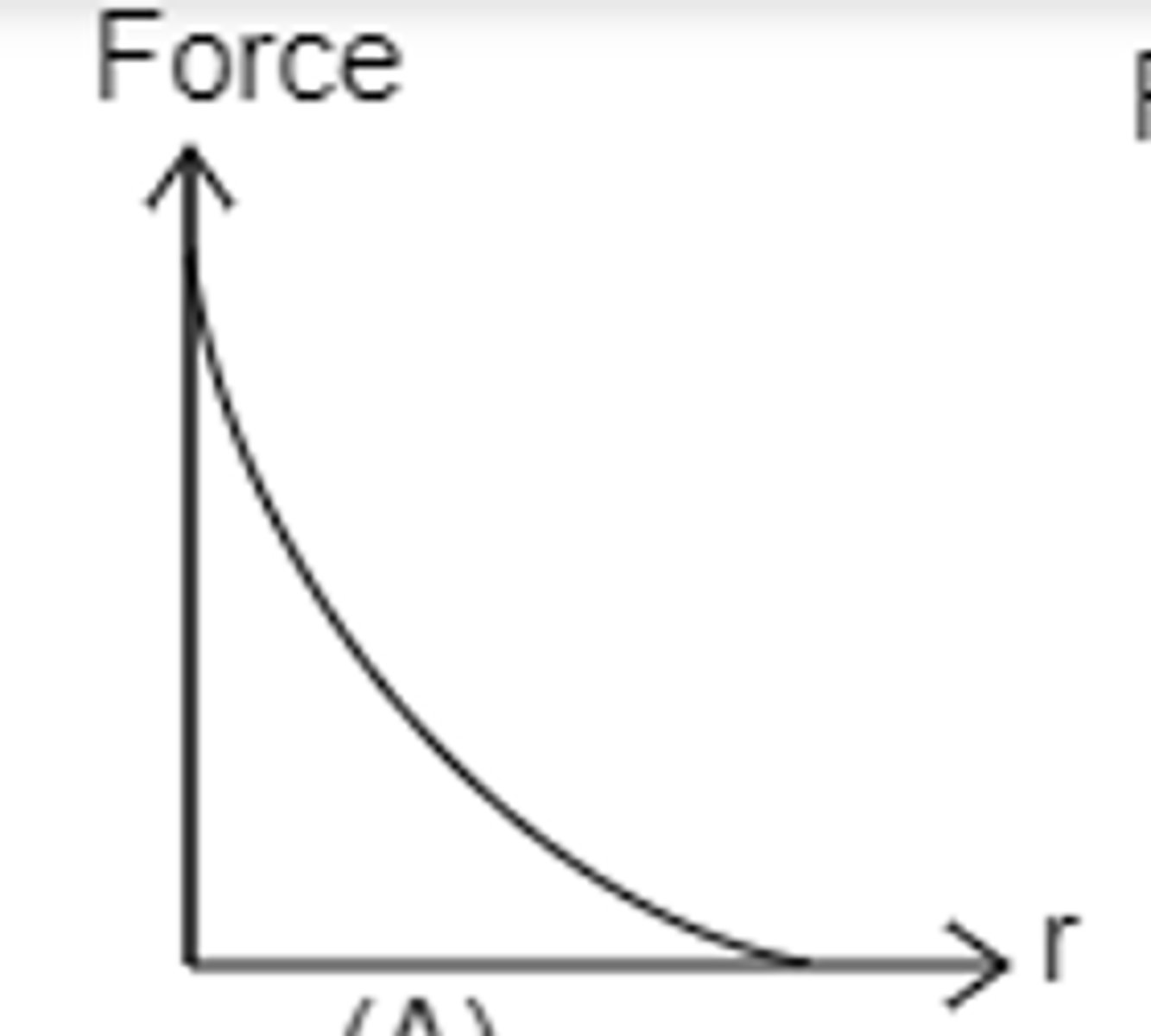
How is the work done on a point charge found from a force-distance graph? (1)
The area under the force-distance graph is equal to the work done on a point charge.
What is meant by the electric potential energy? (1)
This is the work done needed to move a point charge (q) from infinity to a radius (r).
What is the equation for the electric potential energy? (1)
- This is given by E = Vq = Qq / 4πε_0r
- Where E is the electric potential energy (J), V is the electric potential (V). Q is the larger charge of the objects (C), q is the smaller charge of the objects (C), ε_0 is the permittivity of free space (8.85 x1 0^-12Fm^-1) and r is the seperation between the centres of the two objects (m).